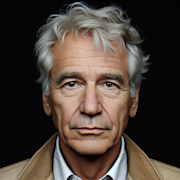The Enduring Influence of Classic German Expressionist Cinema

The history of cinema is filled with influential movements that have shaped the art form and inspired generations of filmmakers. One such movement is German Expressionism, which emerged in the early 20th century and left an indelible mark on the industry. This style of filmmaking, characterized by its bold and stylized visuals, innovative storytelling techniques, and exploration of complex themes, continues to captivate audiences and inspire filmmakers around the world.
The Origins: What is German Expressionism?
German Expressionism was a cultural and artistic movement that emerged in the years following World War I. It encompassed various art forms, including painting, architecture, literature, and most notably, cinema. The movement aimed to challenge the traditional and realistic representation of reality and instead sought to convey inner emotional states and subjective experiences.
The Rise of German Expressionist Cinema
In the tumultuous post-war years, German Expressionist cinema provided an escape for both audiences and filmmakers. The stark and striking visuals, unconventional storytelling techniques, and dark and moody atmospheres allowed audiences to explore their own anxieties and fears in a visually arresting manner.
Filmmakers like Robert Wiene, Fritz Lang, and F.W. Murnau pushed the boundaries of filmmaking, creating visually stunning masterpieces that explored the depths of human psyche. They utilized inventive set designs, distorted perspectives, and exaggerated performances to create a visual language that was both haunting and mesmerizing.
Elements of German Expressionist Cinema
German Expressionist cinema is characterized by several distinct elements that set it apart from other cinematic movements of its time. These elements not only contributed to its enduring influence but also continue to inspire filmmakers to this day.
1. Distorted Set Design and Lighting
One of the most striking visual aspects of German Expressionist cinema is its use of distorted and exaggerated set designs. Filmmakers would often build elaborate and asymmetrical sets that reflected the inner turmoil of the characters and helped create a sense of unease and disorientation. The use of sharp angles, stark contrasts between light and shadow, and exaggerated perspectives created a nightmarish and otherworldly atmosphere.
2. Expressionistic Cinematography and Lighting
Cinematography played a crucial role in conveying the emotional landscape of German Expressionist films. Cinematographers experimented with unconventional camera angles, tilts, and extreme close-ups to create a sense of unease and emphasize the psychological and emotional states of the characters. Lighting was also a vital tool in setting the mood, with high contrast between light and shadow commonly used to create a sense of tension and drama.
3. Symbolism and Metaphor
German Expressionist cinema was highly symbolic and metaphorical. Filmmakers used visual symbols and recurring motifs to convey deeper meanings and explore complex themes. This symbolism often represented societal anxieties, political unrest, or psychological unease. Through symbolic imagery, German Expressionist filmmakers were able to tap into the subconscious fears and desires of their audiences.
4. Psychological Exploration and Expression
One of the defining characteristics of German Expressionist cinema is its exploration of the human psyche. Filmmakers delved into the depths of human emotions, desires, and fears, often using complex and tortured characters to reflect the psychological turmoil of the era. This psychological depth allowed audiences to connect with the films on a deeply personal level.
Legacy and Influence of German Expressionist Cinema
The influence of German Expressionist cinema can be seen in countless films that followed its heyday. Filmmakers across the globe have drawn inspiration from its visual style, storytelling techniques, and exploration of complex themes. Some of the notable examples of its enduring influence include:
1. Film Noir
German Expressionist cinema played a significant role in shaping the film noir genre, which emerged in Hollywood during the 1940s and 1950s. The distorted visuals, morally ambiguous characters, and dark and moody atmospheres of German Expressionism provided a blueprint for many film noir classics, such as “Double Indemnity” and “The Maltese Falcon.”
2. Tim Burton’s Visual Aesthetic
Renowned filmmaker Tim Burton is known for his distinctive visual style, which often draws inspiration from the German Expressionist movement. From the tilted houses of “Edward Scissorhands” to the dark and twisted landscapes of “Sleepy Hollow,” Burton’s films pay homage to the stark and stylized visuals of the German Expressionist cinema.
3. The Influence on Horror Films
German Expressionist cinema also had a profound impact on the horror genre. Its atmospheric and nightmarish visuals set the stage for future horror classics. Films like “Nosferatu” and “The Cabinet of Dr. Caligari” established the conventions of horror filmmaking and paved the way for iconic horror directors like Alfred Hitchcock and Stanley Kubrick.
Conclusion
The enduring influence of classic German Expressionist cinema cannot be overstated. Its bold and stylized visuals, innovative storytelling techniques, and exploration of complex themes continue to captivate audiences and inspire filmmakers around the world. By challenging the traditional norms of filmmaking and delving into the depths of human psychology, German Expressionist cinema has left an indelible mark on the art form and will undoubtedly continue to do so for generations to come.

Desmond van der Walt
Journalist
More From Classics Authority Movies

Movie
Shane (1953)

Movie
Million Dollar Baby (2004)

Movie
Magnolia (1999)

Movie
No Country for Old Men (2007)

Movie
David Lean: Master of Epic Classics

Movie
Celluloid and Scandal: Controversial Moments in Classic Film History





